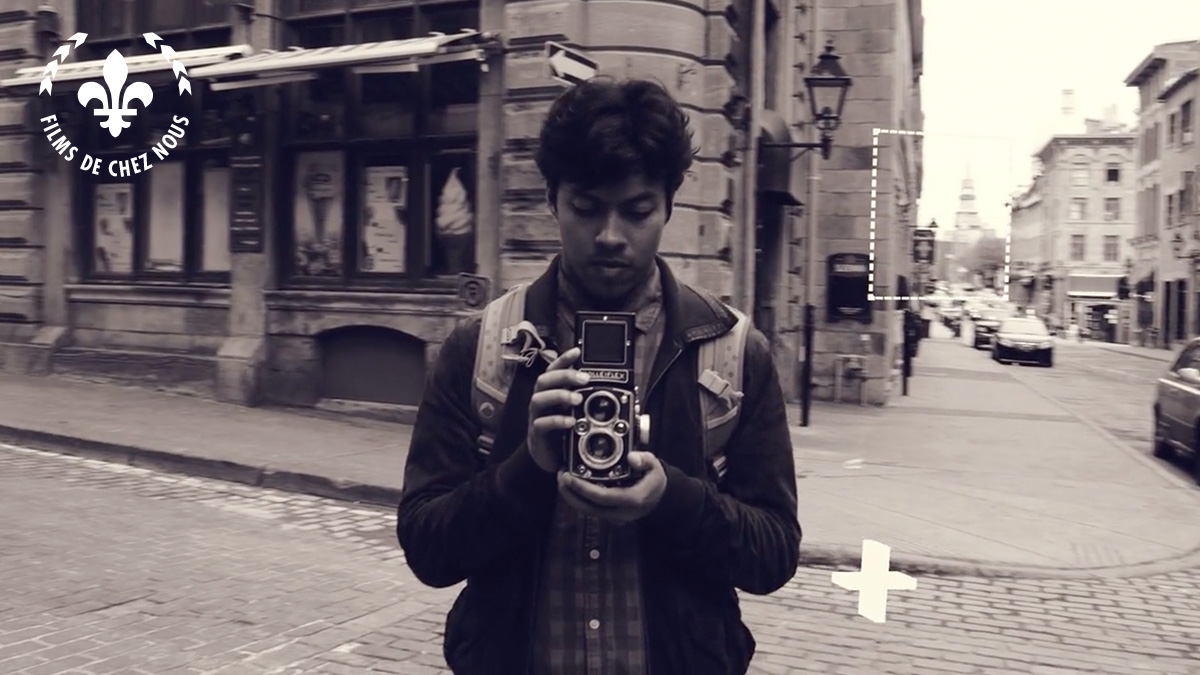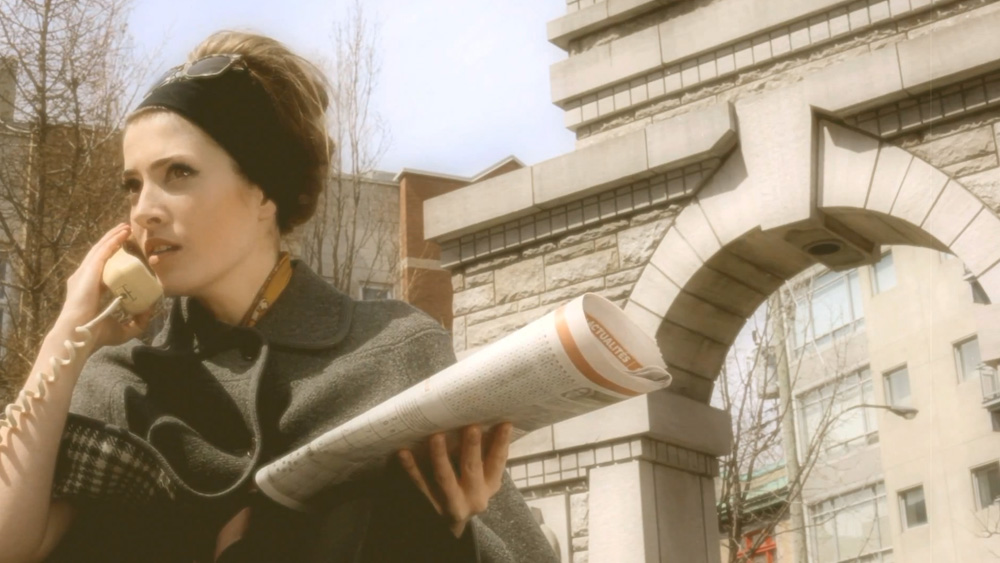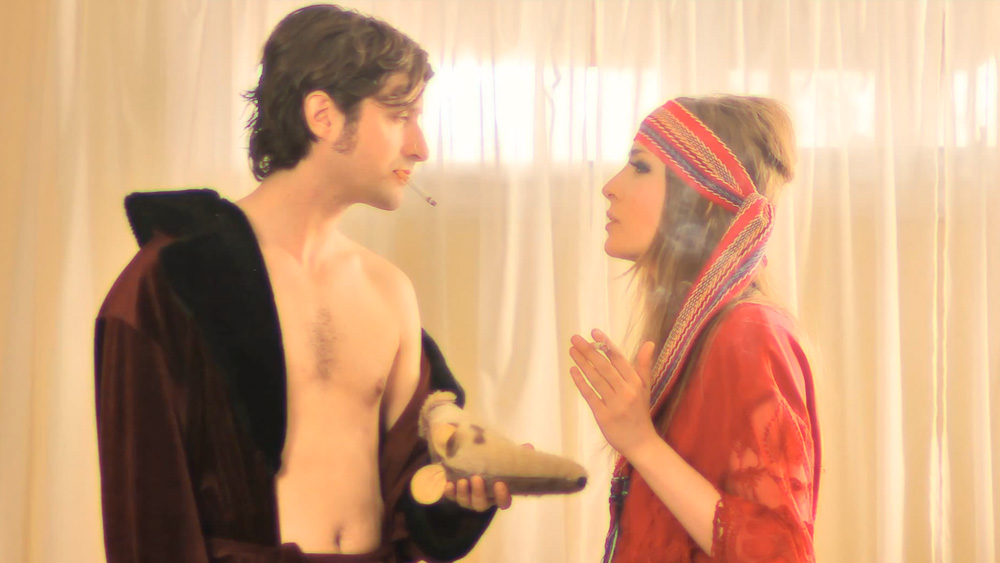A romantic melodrama set in a theatrically charming European apartment, portraying the nonlinear relationship between Chiara, a young American runaway, and J, an enigmatic French artist, inviting audiences to reexamine their perceptions of love and relationships in the mid-1970s
Andre Bato’s “Petit Louis” invites audiences into a realm of romantic melodrama, unfolding the intricate relationship between Chiara, a spirited young runaway from America, and J, a mysterious French artist. Set within the quaint confines of a theatrically charming European apartment in the mid-1970s, the film takes viewers on a nonlinear journey through the highs and lows of love.
Beyond its narrative, “Petit Louis” delves into profound themes of dependency and attachment, using Chiara and J as vessels to explore the nuances of human connection. The film becomes more than a love story; it serves as a catalyst for introspection, encouraging audiences to engage in a dialogue about their own perceptions of relationships. By presenting love in all its diverse facets, the film challenges and redefines preconceived notions of romance, offering a fresh and distinct lens through which to view the complexities of the heart. We had the opportunity to ask Andre a few question on his captivating project, make sure to read the interview below.
“Petit Louis” is described as a romantic melodrama that unfolds in a nonlinear fashion. Can you share your inspiration for choosing this narrative structure and how it enhances the storytelling?
I’ve always been a fan of films that play with the chronology of a narrative – whether it’s by completely bouncing around pivotal points of a story, or even by heavily relying on flashbacks. I appreciate nonlinear structures because they require, or even demand, attention, both as the viewer and as the writer – it’s a challenge.
For Petit Louis (2023) specifically I wanted to create a film and subsequent narrative structure that if played on a loop in a room, an audience member could pop in at any point during the film and still understand the entirety of Chirara’s and J’s relationship. The structure to me is also referential of reminiscing about a past relationship: those memories about an ex lover don’t pop into your head chronologically, typically they manifest themselves as a series of highlights, highs and lows, because of their importance rather than when they happened.
The film is set in a small European apartment in the mid-1970s. How did you work with the production design and cinematography to transport the audience to that specific time and place?
First and foremost we did a lot of research, mainly by watching films from the time. To me it was more important that the apartment as an entity, or even as a character within the film, and everything inside it had the feeling of a 1970s film rather than being historically accurate.
Brittany Porter (production designer) and I had many conversations that focused on textures, light, shadows, and most of all tones and colors and what they ultimately convey. The color palette especially was something that we hammered into down to the smallest detail or object – as our goal was always to create images that were reminiscent of watercolor and pastel paintings. In terms of execution I was lucky enough to witness Brittany and her team build all that research and mood boarding into a physical space, an apartment that had all the characteristics we imagined in pre-production but simultaneously felt lived in, that had history, and ultimately could pass as a believable setting for our characters to interact within.
As far as cinematography, Guido Raimondo (Cinematographer) and I worked on mapping out each scene with the least amount of cuts possible. Again, the goal here was to create compositions and images that felt like paintings, and give the viewer the time to sit within each scene’s emotional state. With the exception of two moments, which are shot with a very nasty handheld movement to break the film’s structure, we opted for dolly only moves, making the camera a very silent spectator who’s watching the characters as they interact with one another. The choice of shooting 35mm came naturally in terms of adding that character and texture which the time-period and story needed.
The characters in the film, Chiara and J, are central to the story. Can you discuss the casting process and the qualities you were looking for in the actors to bring these characters to life?
I already had a very strong idea of what Chiara’s and J’s features had to look like – so beyond that what I was really looking for was two people that could hold very long takes and travel emotionally within them, both as singular characters and with each other. With the film being so intimate and emotionally demanding we had to do a lot of chemistry readings, and when Jamie and Tom read with one another it was the first and only time I felt like I wasn’t listening to my script being read out loud but rather felt like I was watching two lovers interact. They felt very authentic with one another – gripping as a duo that would be able to hold the weight of Petit Louis on their shoulders for its entirety.
“Petit Louis” explores themes of dependency and attachment. How did you approach depicting these complex emotional dynamics between the characters, and what message do you hope viewers take away regarding love and relationships?
Petit Louis (2023) to me is a love story – plain and simple. I just wanted to challenge the definition of what falls within the parameters of love as an emotion: love, while it is the purest and most incredible emotion a person can feel, can also be demanding, it can be painful, confusing, and overwhelming.
Loving someone can even become a prison.I think as people we prefer to associate love with feelings that are strictly positive – what I tried to do with this film is portray two people who do truly love each other, but because of their past trauma and emotional baggage, do so in very distinct, out-of-the-ordinary ways, and ultimately end up hurting each other in the process.
The runtime is just under an hour. Could you discuss the challenges and creative decisions involved in telling a compelling story within a longer short film format (or a shorter feature-length), as well as the process of making an independent film of this length?
First of all, when writing Petit Louis I didn’t want to constrain the story to a specific length. I didn’t set out to write a short, or a feature – also because as I mentioned I wanted the film to be able to be played on a loop. So the length didn’t necessarily matter to me as long as the story had enough details to feel “complete”.
With this being the longest film I’ve ever done, we really just took it scene by scene. Each vignette, as we called them, was very demanding because of its length, blocking, or emotional tone – so we focused on each beat of the film, and that beat only, before moving onto the next. That actually made it very simple for us to address during post, we had a strong first cut within 48 hours once we got our scans back.
The film encourages a dialogue about the audience members’ perceptions of their own relationships. How do you envision the film sparking conversations and reflections on love and romance?
I just hope that some of the more extreme aspects of Chiara’s and J’s relationship are met with empathy. The message that I’d like to communicate with the film is that sometimes there isn’t a bad or good “guy” but just situations that people are forced to live and operate within.
The mid-1970s setting adds a distinct charm to the film. Can you elaborate on the research and creative choices made to authentically capture that era on screen?
I love 1970s films, they have a very distinct charm to them that makes them feel like fantasy even when they’re depicting situations that are grounded in reality. They’re romantic, often times through their technical flaws. For Petit Louis I wanted to recreate that charm, those characteristics that ultimately make it very blatant that this is a work of fiction – I think that allows the audience to calm their nerves and enjoy the ride a little more, especially when dealing with themes like those in the film.
How did you work with the film’s soundtrack and music to create a specific emotional atmosphere that complements the themes and characters in “Petit Louis”?
With the soundtrack I knew I wanted to have one single Hero theme that would play and morph throughout the narrative, much like we are dealing with one location that changes and reacts depending on which stage Chiara and J are in their relationship. Jean (composer) and I took into consideration films like The Godfather, Taxidriver, and Last Tango In Paris, that are characterized by those epic and instantly recognizable themes, and made our own version of it. The theme itself, and the leading trumpet specifically, are meant to symbolize Petit Louis himself, who is both narrating the story and reacting to Chiara and J as they try to navigate their relationship.
Can you discuss the creative and technical processes behind the film’s many astute transitions, and how they contribute to the unique narrative structure of the film?
Transitions are my favorite device to play with, no question about it. When writing each vignette I knew I wanted these long, emotional rollercoasters to be intermingled with one another – again, to resemble the feeling of memories popping up into your mind with no distinct and clearcut ending or beginning. Just snippets in time.
I wrote each transition out in the script as you see them in the film today, which made it mandatory for us to hit the right beat at the beginning and end of each take. It was a challenge but definitely extremely rewarding to see it all come together in the edit.
This may not be a short film, but are there any shorts that really stand out for you?
I just watched Boris by Director Conor Scheinberg. Highly recommend.





